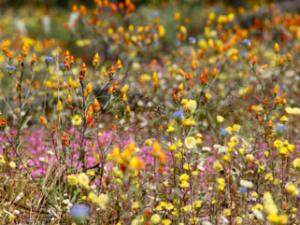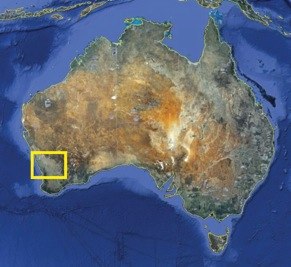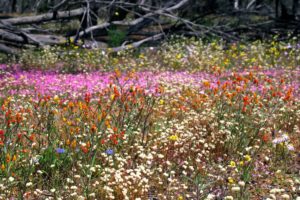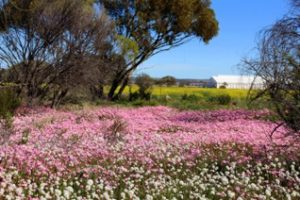Mechanisms of assembly in Western Australia’s novel woodlands under the combined impacts of climate change, agricultural intensification and land-use change
Project Summary
York Gum (Eucalyptus loxophleba) woodlands were formally extensive in the Western Australian Wheatbelt, but persist now as smaller patches in a cropped landscape. For most of the year these woodlands have a bare understory until winter rain triggers germination of carpet-forming annual plants. These annual plants include many native species (daisies largely) but introduced annual grasses and daisies are increasingly common, particularly where woodlands adjoin crops. Introduced species often grow amongst native species in new combinations, creating “novel” communities. We are interested in the mechanisms behind the formation of these mixtures and also those that maintain annual plant diversity in general. Specifically we aim to determine the relative importance of the local environment, plant competition and random processes in forming the observed plant communities. This information will enable us to predict the types of mixtures we might see as the climate continues to dry and warm in the southwest
Project Collaborators
Margie Mayfield
The University of Queensland
Prof Richard Hobbs
University of Western Australia
Prof Robert Holt
University of Florida
Dr John Dwyer
University of Queensland
Prof Janneke Hille Ris Lambers
University of Washington
Post-graduate Students
Claire Wainwright (Postdoc, 2016)
Victoria Reynolds (PhD, current 2017)
Maia Raymundo (PhD, current 2017)
Trace Martyn (PhD, current 2017)
Cath Bowler (Honours, current 2017)
Steph Creer (PhD, 2016)
Tom Flanagan (Honours, 2016)
Xingwen Loy (Research Assistant, 2016)
Alexandra Nance (Honours, 2015)
Tim Staples (Honours, 2013)
Hao Ran Lai (Honours & Research Assistant, 2013)
 Wildflowers of the WA York gum woodlands Wildflowers of the WA York gum woodlands |
 Location: Wheatbelt, South West, Western Australia |
 Isolated fragments of York gum woodlands support incredibly diverse plant and insect communities Isolated fragments of York gum woodlands support incredibly diverse plant and insect communities |
 |
 |